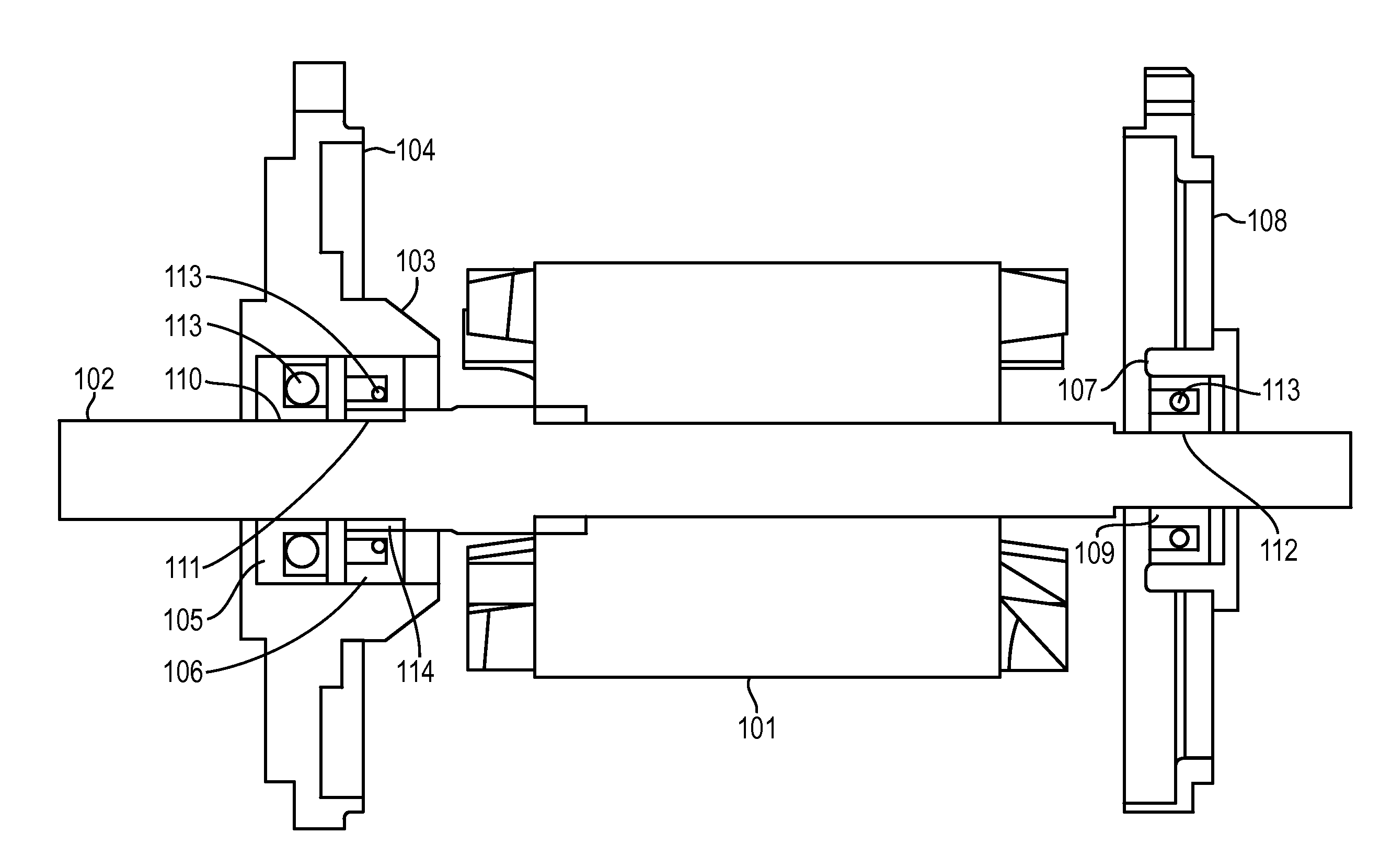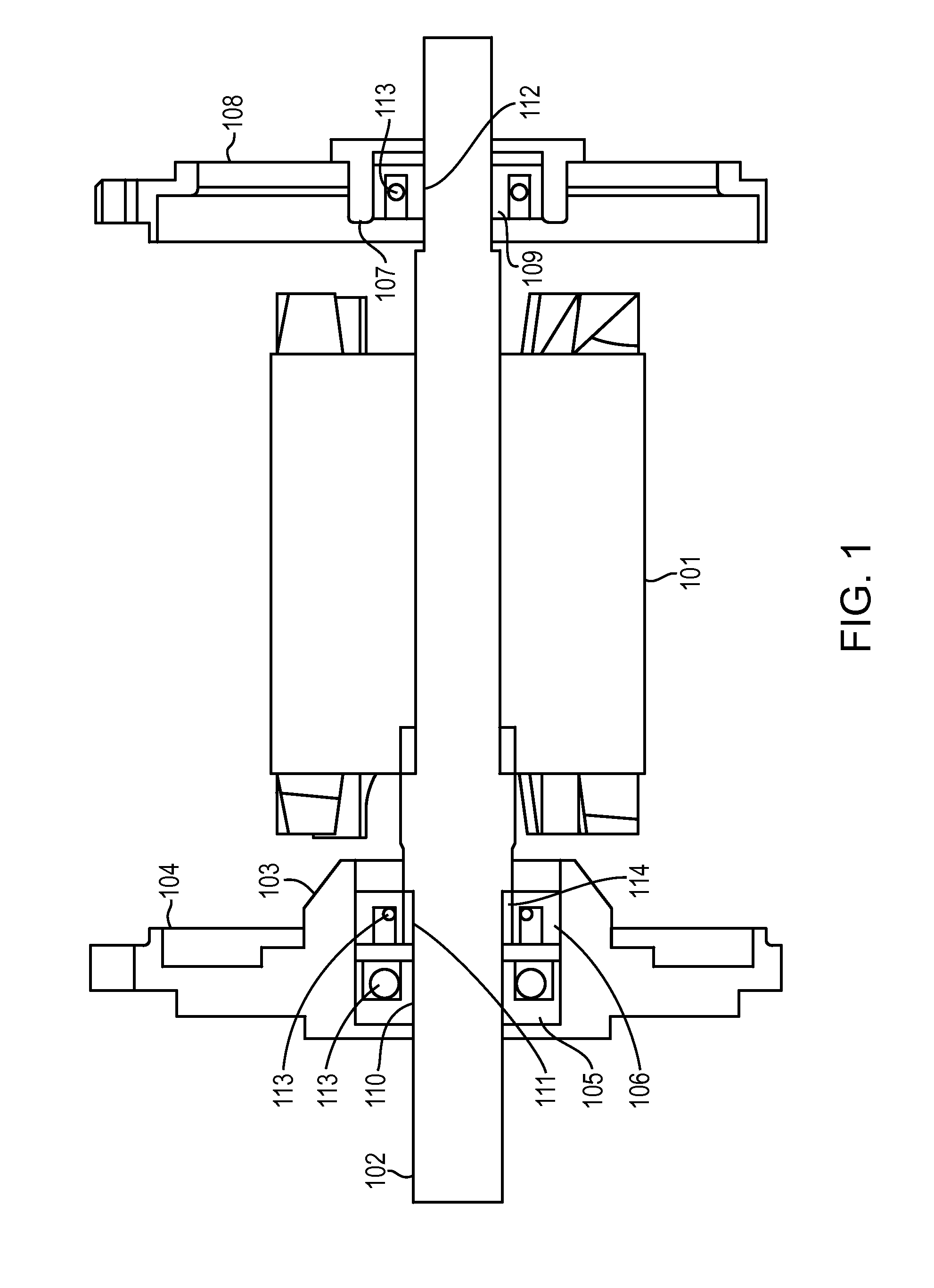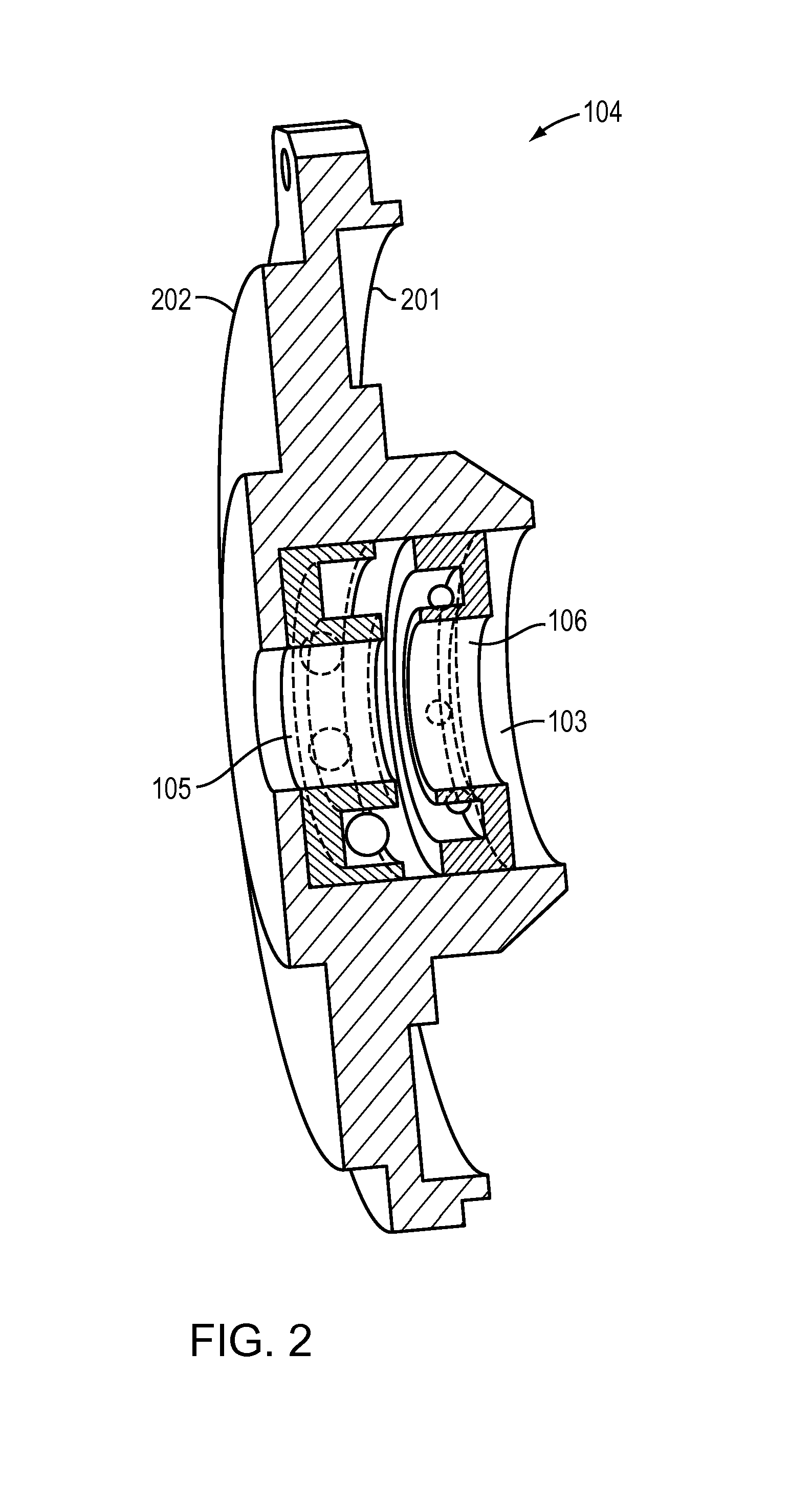Bearing implementation for a rotating electrical device
a technology of rotating electrical devices and bearings, which is applied in the direction of bearing units, mechanical energy handling, mechanical apparatus, etc., can solve the problems of direct financial loss to the end user in a production or critical uptime environment, failure of rear bearings, and general motor efficiency drop, so as to reduce or eliminate the cost of downtime and reduce the effect of cos
- Summary
- Abstract
- Description
- Claims
- Application Information
AI Technical Summary
Benefits of technology
Problems solved by technology
Method used
Image
Examples
Embodiment Construction
[0015]FIG. 1 depicts a cross section view of an example motor that includes at least three bearings. The motor 100 includes a rotor 101 that is pressed onto a shaft 102. Further, the motor 100 includes a housing 103 of a front plate 104, wherein the housing 103 maintains or holds two or more front bearings, for example, a front-most bearing 105 that is located furthest towards a proximal end of the shaft 102 and a backup or second bearing 106 that is located behind the front-most bearing 105, and is designed to handle the load for the front-most bearing 105 when the front-most bearing 105 degrades to a certain point or fails. In some instances, the front plate 104 may have to be modified to accommodate the two or more front bearings 105 and 106 or to meet desired performance and / or structural requirements. The two or more front bearings 105 and 106 may be embodied as individual and separate bearings within the housing 103, or the front-most bearings 105 and backup or second 106 may ...
PUM
 Login to View More
Login to View More Abstract
Description
Claims
Application Information
 Login to View More
Login to View More - R&D
- Intellectual Property
- Life Sciences
- Materials
- Tech Scout
- Unparalleled Data Quality
- Higher Quality Content
- 60% Fewer Hallucinations
Browse by: Latest US Patents, China's latest patents, Technical Efficacy Thesaurus, Application Domain, Technology Topic, Popular Technical Reports.
© 2025 PatSnap. All rights reserved.Legal|Privacy policy|Modern Slavery Act Transparency Statement|Sitemap|About US| Contact US: help@patsnap.com



